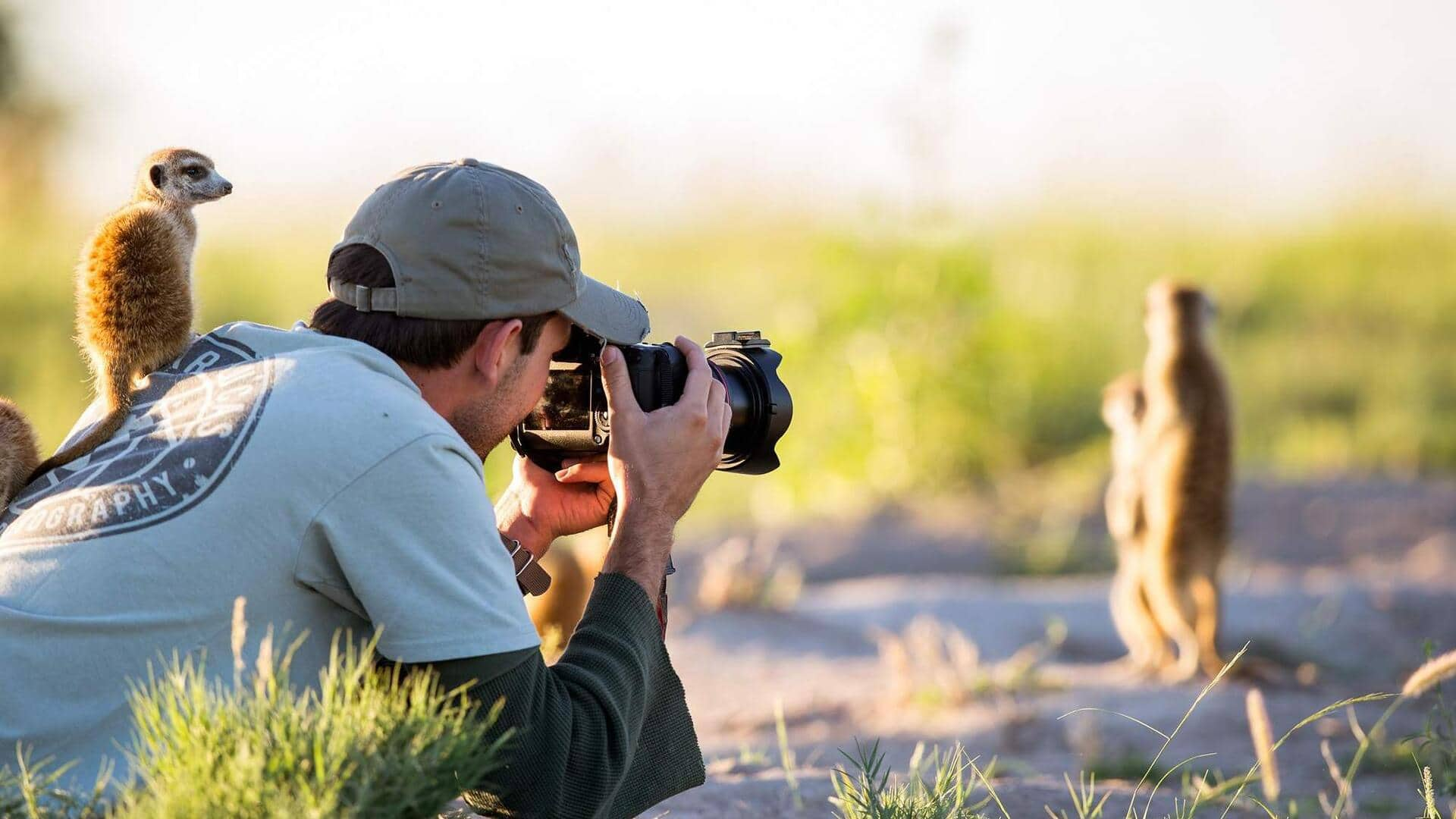
Exploring African wildlife through photography
What's the story
African wildlife photography provides an unparalleled glimpse into the continent's vibrant biodiversity. It encapsulates the raw beauty of diverse species in their natural environments, from the regal lions of the Serengeti to the enigmatic leopards of Kruger National Park. This article offers valuable tips and advice for anyone interested in pursuing this fascinating art form.
Guidelines
Understanding local regulations and ethics
Before you channel your inner Nat Geo in the African wildlife, know the rules. Parks have strict guidelines on animal distance, drone use, and permitted photography areas. Following them not only keeps you on the right side of the law but also promotes ethical practices. These rules are in place to protect the animals and their habitats.
Equipment
The right gear for African terrain
For capturing stunning African wildlife images, a DSLR or mirrorless camera with a telephoto lens of minimum 200 mm is essential for photographing from a safe distance. And, bring plenty of spare batteries and memory cards as power sources are limited in remote areas. A strong tripod helps to get those sharp shots during the golden hours of sunrise and sunset.
Timing
Timing is everything
The most ideal times for wildlife photography in Africa are during the early morning and late afternoon when animals are at their peak of activity. These times also provide softer light, enhancing the quality of your photos. Visiting during the dry season also increases your chances of spotting wildlife. Animals congregate around the remaining water sources, providing easier opportunities for capturing stunning photos.
Respect
Respecting wildlife and environment
While getting that perfect shot is tempting, remember to always prioritize the well-being of animals and their environment. Maintain a respectful distance: Getting too close can stress animals and disrupt their natural behaviors. Use your zoom lens! Leave no trace: Don't litter or trample habitats. Stick to paths and follow guides' instructions to the letter.
Improvement
Continuous learning and practice
Becoming a skilled wildlife photographer takes time, patience, practice, and a willingness to learn. You can benefit greatly from attending workshops or joining tours led by seasoned professionals. They'll teach you advanced techniques you won't easily find elsewhere, like tracking animal movements or understanding lighting conditions better. And, of course, regularly critique your own work and learn from others. It's a surefire way to get better at this art form.